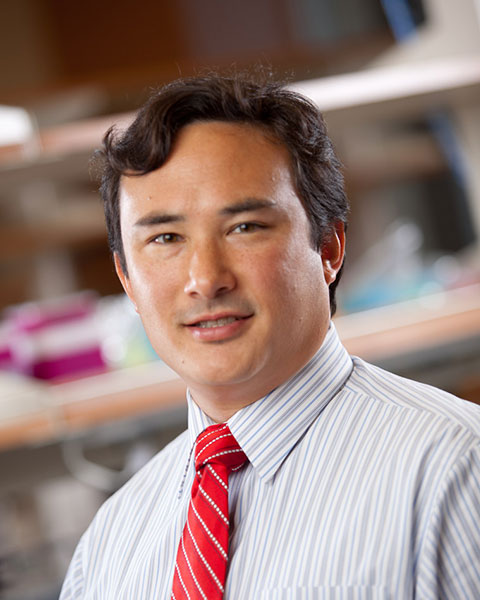QP 24 - Bio 6: Immunotherapy and Immune Response II
1142 - Macrophages Play Key Role in Protecting Salivary Glands from Radiation Induced Damage
Wednesday, October 2, 2024
11:00 AM - 11:05 AM ET
Location: Room 143

Randall Kimple, MD, PhD, MBA, FASTRO
Univ of Wisconsin
Madison, WI, United States
Presenter(s)
Purpose/Objective(s): We have used a preclinical mouse model to investigate the use of mesenchymal stromal cells for treatment of radiation induced xerostomia. Based on data from spatial transcriptomics identifying alterations in immune biology in irradiated salivary glands, we have used immunodepletion strategies to better define the role of immune cells in radiation induced salivary gland damage. Our ultimate goal is to develop effective cellular therapy approaches to improve salivary function after radiation therapy.
Materials/
Methods: B cells were depleted using antiCD20 antibody and macrophages were depleted using clodronate liposomes with appropriate controls. Depletion was validated using flow cytometry of spleens and peripheral blood. Salivary glands of C57 Bl/6 mice are given 15 Gy in a single fraction using a small animal image-guided irradiator after confirmation of cellular depletion. Submandibular gland tissue was harvested 3, 7 and 60-days after radiation. Saliva was collected at the same timepoints. Tissue was assessed for fibrosis (masons trichrome stain), mucin (alcian blue), amylase (α-amylase), and for salivary gland stem cell markers (MIST1, SCA, Sox2, and c-Kit) and immune microenvironment (CD19, CD3, and F4/80) by immunohistochemistry.
Results: Radiation results in a significant decrease in salivary production compared to nonirradiated controls (p-value = 0.03). Histological evaluation of tissues showed an increase in glandular structure disorganization over time, with a decrease in the size and distribution of the acinar compartments throughout the gland (mean area stained: No RT=25.81% vs RT=19.98%, p-value=0.005). Immune depletion with anti-CD20 and clodronate resulted in significant decreases in B-cells and macrophages, respectively. Radiation results in significant decreases in salivary production. B cell depletion results in a smaller decrease in saliva production 3 days after radiation. Macrophage depletion results in a larger drop in saliva production suggesting a role for macrophages in protection against radiation induced damage. Consistent with this, in fully immune competent animals, there is an increase in macrophages seen within 7 days following radiation that resolves by the late (60 day) timepoint.
Conclusion: The results implicate macrophage alterations in radiation-induced salivary gland damage and provide valuable mechanistic insight guiding potential approaches to intervene in radiation induced xerostomia. We are pursuing cell therapy-based approaches to prevent and repair damage caused by radiation to improve the lives of our patients.
Materials/
Methods: B cells were depleted using antiCD20 antibody and macrophages were depleted using clodronate liposomes with appropriate controls. Depletion was validated using flow cytometry of spleens and peripheral blood. Salivary glands of C57 Bl/6 mice are given 15 Gy in a single fraction using a small animal image-guided irradiator after confirmation of cellular depletion. Submandibular gland tissue was harvested 3, 7 and 60-days after radiation. Saliva was collected at the same timepoints. Tissue was assessed for fibrosis (masons trichrome stain), mucin (alcian blue), amylase (α-amylase), and for salivary gland stem cell markers (MIST1, SCA, Sox2, and c-Kit) and immune microenvironment (CD19, CD3, and F4/80) by immunohistochemistry.
Results: Radiation results in a significant decrease in salivary production compared to nonirradiated controls (p-value = 0.03). Histological evaluation of tissues showed an increase in glandular structure disorganization over time, with a decrease in the size and distribution of the acinar compartments throughout the gland (mean area stained: No RT=25.81% vs RT=19.98%, p-value=0.005). Immune depletion with anti-CD20 and clodronate resulted in significant decreases in B-cells and macrophages, respectively. Radiation results in significant decreases in salivary production. B cell depletion results in a smaller decrease in saliva production 3 days after radiation. Macrophage depletion results in a larger drop in saliva production suggesting a role for macrophages in protection against radiation induced damage. Consistent with this, in fully immune competent animals, there is an increase in macrophages seen within 7 days following radiation that resolves by the late (60 day) timepoint.
Conclusion: The results implicate macrophage alterations in radiation-induced salivary gland damage and provide valuable mechanistic insight guiding potential approaches to intervene in radiation induced xerostomia. We are pursuing cell therapy-based approaches to prevent and repair damage caused by radiation to improve the lives of our patients.
